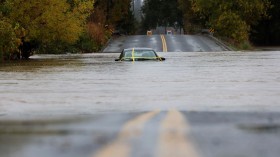The number of spotted-tailed quolls in north Queensland is dwindling to critically endangered levels, according to recent research. The species is in danger of facing extinction due to its rapid decline.
The spotted-tailed quoll, Dasyurus maculatus gracilis, is a subspecies that lives in north Queensland and inhabits cool, high-elevation areas. Over two years, scientists observed population trends in this subspecies.
Spotted-Tailed Quoll
With adult males growing to about 3.5 kg and females weighing in at about 1.5 kg, the spotted-tailed quoll is ranked as the second-largest carnivorous marsupial after the Tasmanian devil. The species feeds on possums, bandicoots, rats, and birds, among other creatures.
Conrad Hoskin, a James Cook University associate professor and study co-author, compared the spotted-tailed quoll to a faster, more agile Tasmanian devil that can climb trees to catch prey.
The researchers were able to recognize specific quolls from photographs taken from bait-activated camera traps thanks to the distinctive patterns of their spots.
According to Hoskin, there are six distinct populations of northern spotted-tailed quolls that live in various mountainous terrains.
Hoskin said that the fact that the total is divided into six small populations, with quolls serving as the top predator in those mountains, only serves to exacerbate the issue.
In New South Wales, the spotted-tailed quoll is also referred to as the tiger quoll.
The spotted-tailed quoll's northern subspecies is different from the smaller, similarly endangered northern quoll, which is also found in Queensland.
Critically Endangered, Rapid Decline of Populations
From earlier estimates of 500 quolls about 25 years ago, the population has decreased to 221 adult quolls. This fits the requirements for the Environment Protection and Biodiversity Conservation Act to list the subspecies as critically endangered.
The cause of the population decline is still unclear to the researchers. According to Hoskin, cane toads may be the source of some poisoning cases, but they have never been relatively common in the uplands of the wet tropics. He did point out that many more female toads have entered the higher elevations over the past decade or so.
The other factor is that north Queensland has a lot of traffic and fragmentation, so there are undoubtedly some dying by vehicular hits. They might be affected by climate change if it affects their prey, such as possums as well as other small mammals.
He explained that if inbreeding effects started to appear on top of other dangers, it could lead to a fairly rapid decline, The Guardian reports.
The study by Hoskin and two other colleagues was recently published in the journal Austral Ecology.
New South Wales, says that threats like foxes and cats that prey on quolls and compete against them for food, feral cats that can spread diseases that affect quolls, and persecution by people who have frequently blamed quolls for the loss of livestock and poultry are other factors contributing to the rapid decline of these populations.
Also Read: Endangered Marsupials in Australia Endure Sleep Deprivation for Sex
'Quollidor' Project
According to the Government of New South Wales, To enhance quoll monitoring in the Barren Grounds-Budderoo region, the NSW Saving our Species program established the Quollidor Project.
The connected vegetation corridor, known as the "Quollidor," connects the quoll's habitat in the southern Blue Mountains to the Metropolitan Special Area water catchments on the South Coast.
Related Article: Hidden Cameras Catch Nearly Locally Extinct Carnivorous Quolls in Conservation Site -Australia
© 2024 NatureWorldNews.com All rights reserved. Do not reproduce without permission.





